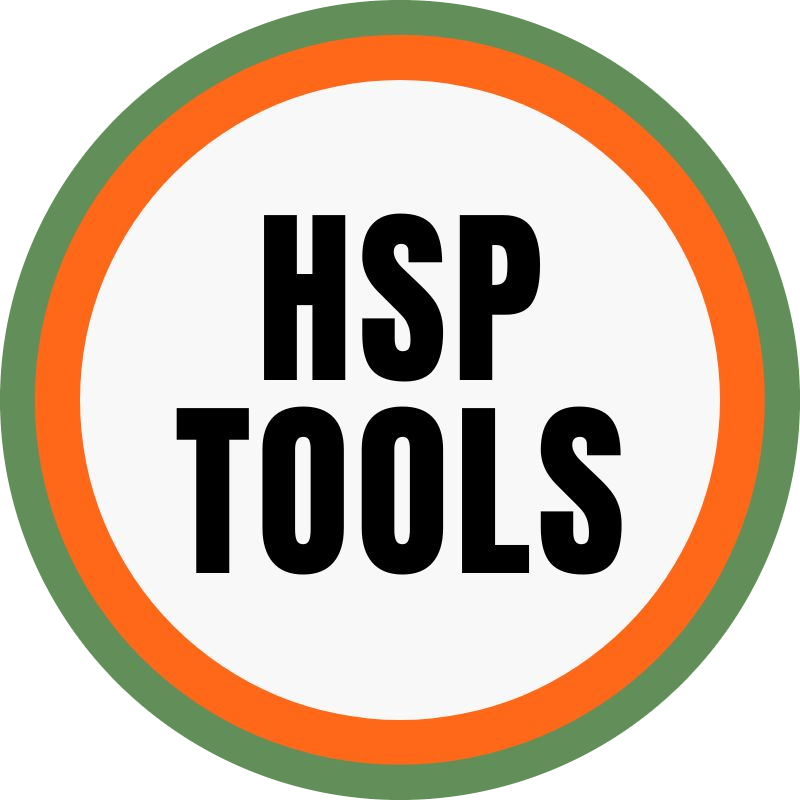Are you a Highly Sensitive Person (HSP) and a High Sensation Seeker (HSS)? You may have seen this combo of seemingly contradicting traits abbreviated as HSP/HSS or HSS/HSP,
You may even have taken the free High Sensation Seeking test by Dr. Elaine N. Aron.
The HSP/HSS test is available on Dr. Aron’s website here and in her bestselling book for HSPs, The Highly Sensitive Person: How to Thrive When the World Overwhelms You.
Enter the New Study.
Knowing a Highly Sensitive Person could also be a High Sensation Seeker is not new. Or, at least, you may or may not consider it recent information.
What is new is this 2023 study on High Sensitivity and High Sensation Seeking. And the insights being shared by Dr. Elaine Aron on her blog, hsperson.com.
According to Dr. Aron’s conclusions from the study, HSP and HSS are independent traits, and there’s a 50% chance that you or another HSP is also a High Sensation Seeker.
On the measure specifically designed for them, they did not score lower than others. That is, there was no association between High Sensitivity and HSS. … the two traits are independent.
About fifty per cent of HSPs are High Sensation Seekers, and about 50% are not. Or, put yet another way, there is a 50-50 chance that you or any other HSP is a High Sensation Seeker.
Of course, there are degrees of HSS, so we are talking about just being on one side of the midpoint or the other.
— Dr. Elaine N. Aron
So if you were wondering what the chances are that HSPs can also be HSS, now you know. It’s 50-50 or 50%.
More Insights from the HSP/HSS Study

In addition to knowing there’s a 50% chance that HSPs are also HSS, here are three more insights from the study.
1. SPS and SS are two independent traits
SPS stands for Sensory Processing Sensitivity. It’s the scientific term for High Sensitivity. And SS stands for Sensation Seeking. According to the study:
The present study examined the relationship between sensory processing sensitivity (SPS) and sensation-seeking (SS). Findings showed that the two traits may both exist at high levels in some individuals, and when correctly measured, are largely independent.
So if you are an HSP/HSS, you score high on both SPS and SS.
2. SPS is positively associated with negative urgency
Negative urgency is the tendency to act impulsive when faced with negative feelings. And according to the study, while HSPs usually score low on impulsivity, the opposite is true during negative arousal.
We carried out item analyses and indeed found that numerous HSP Scale items that measure over-arousal and ease of excitation, were positively associated with negative urgency.
Acting impulsively due to negative affect may be a coping mechanism that those with high SPS use to cope with over-arousal.
— the study
And the following is what Dr. Elaine N. Aron had to say about this outcome:
This is a good reason to stay within your comfort zone, with plenty of downtime and boundaries. You do not want to get a bit crazy and do something impulsive just because you are overstimulated.
Dr. Elaine Aron.
3. The SS scale and SSS/HSP scale differ in impulsivity and risk-taking.
The original SS scale (or Sensation-Seeking scale) is a personality questionnaire using four aspects to measure sensation-seeking. The updated SSS/HSP scale (or Sensation-Seeking Scale for Highly Sensitive Persons) is the HSP/HSS scale by Dr. Elaine N. Aron.
And these two scales differ in the following ways:
- When participants took the Sensation Seeking (SS) test, there was a negative response to questions on impulsivity and risk-taking.
- When participants took the Sensation-Seeking test for Highly Sensitive Persons (SSS/HSP), there was a positive response to impulsivity and risk-taking.
And the reason for this is the wording of the statements or questions in these two scales.
So, what does this mean for you as an HSP who might also be an HSS?
This difference shows that Dr. Aron’s HSP/HSS scale is the correct choice for HSPs wanting to measure their sensation-seeking levels.
“=The SSS/HSP Scale appears to be a valid measure of SS, appropriate for use when studying the relation of SS to SPS.
– the Study
Further Reading on High Sensitivity and High Sensation Seeking
The resources below will help you to learn more about being a Highly Sensitive Person and High Sensation Seeker (HSP/HSS).
- Thrill: The High Sensation Seeking Highly Sensitive Person – A book by Tracy Cooper, PhD.
- Highly Sensitive High Sensation Seekers—Giving Equal Love to Both Parts – This blog post by Dr. Elaine N. Aron shares insights on the study and how to love both traits.
- The Highly Sensitive Person who is also a High Sensation Seeker – An older blog post (2006) by Dr. Aron on the HSP/HSS trait.
- The free High Sensation Seeking test by Dr. Aron.
Final Word on the New Study
The 2023 study on High Sensitivity and Sensation Seeking shows that the two traits are independent. This outcome confirms that Highly Sensitive People could also be High Sensation Seekers and vice versa.
The study has also given way to a new statistic as having a 50-50 chance means that 50% of HSPs could also be High Sensation Seekers (HSS).
So, if you find articles purporting that the percentage of HSPs who are also HSS is 30%, know that is not true. This percentage represents HSPs who are extroverts.
And if someone questions your truth, feel free to quote this new study.



